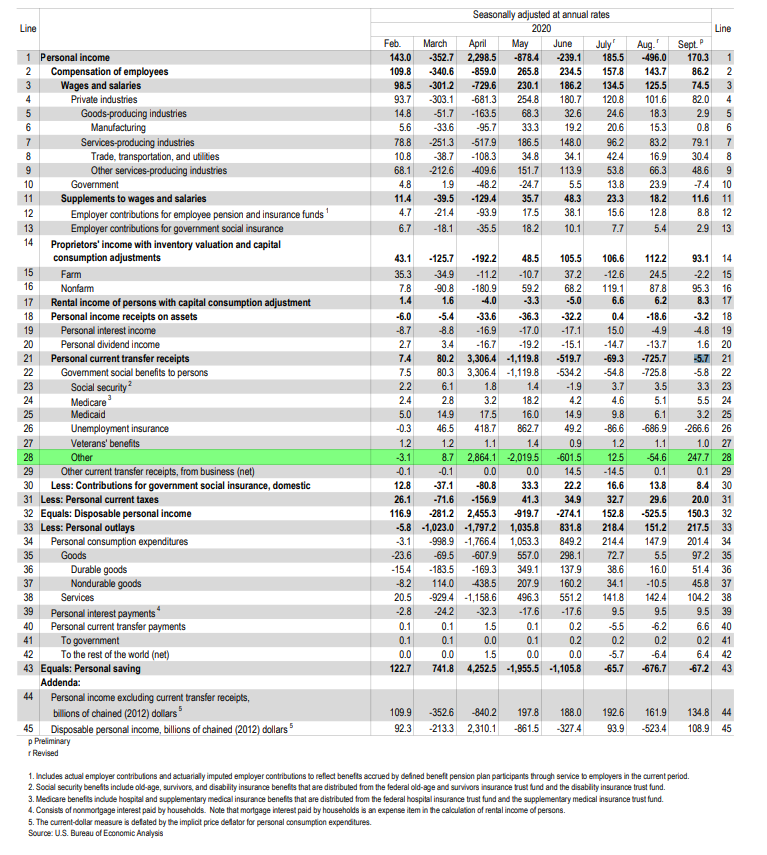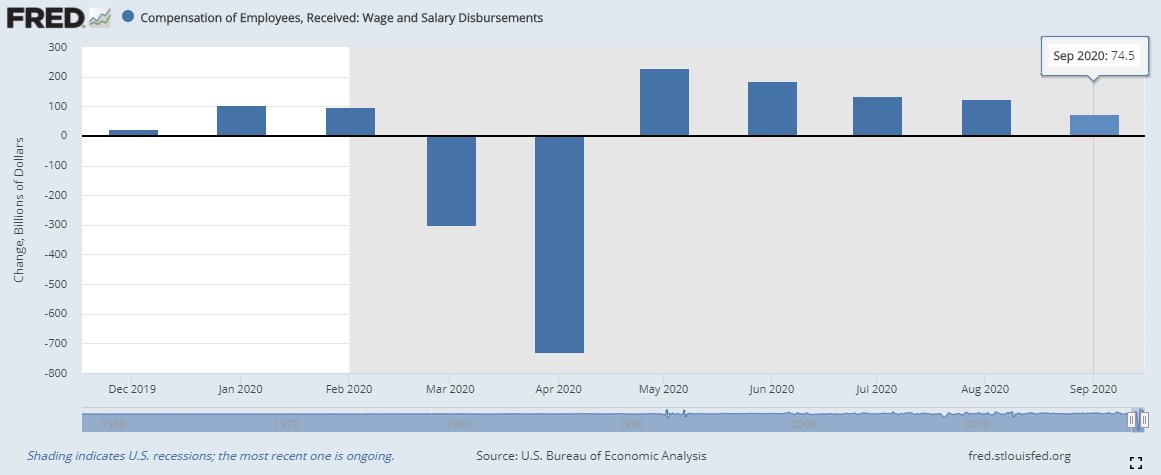
Personal Income:
Interesting trends under the surface of the "surprise" increase in income for September.
The compensation of employees increased $86B, the smallest increase in five months.
The last five months increase (billions):
$265 > $234 > $157 > $143 > $86
Interesting trends under the surface of the "surprise" increase in income for September.
The compensation of employees increased $86B, the smallest increase in five months.
The last five months increase (billions):
$265 > $234 > $157 > $143 > $86
Government transfer payments declined just $5.7 billion.
Last month the decline in transfer payments was ($725) billion.
The delta came from the "other" category of transfer payments.
Last five months of "other":
-$2,019 > -$601 > +$12.5 > -$54.6 > +$247
Last month the decline in transfer payments was ($725) billion.
The delta came from the "other" category of transfer payments.
Last five months of "other":
-$2,019 > -$601 > +$12.5 > -$54.6 > +$247

• • •
Missing some Tweet in this thread? You can try to
force a refresh















